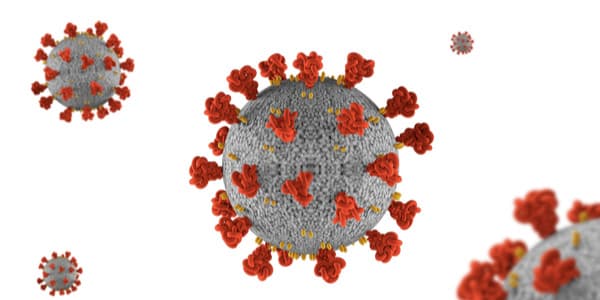How COVID-19 Is Affecting the Oncology Community

The COVID-19 pandemic is changing the world in unimaginable ways. While nearly everyone is at risk for developing the disease, certain groups of people, including those with cancer, are particularly susceptible to it. In addition, COVID-19’s shock on the health care community may impact treatment options for current patients and make it more challenging to continue treatment that is underway.
While the landscape is ever-changing, understanding more about this pandemic can help health care providers and patients alike weigh their options in the days to come.
COVID-19: A Global Issue
- People age 65 and over
- Residents of long-term nursing facilities
- People with pre-existing medical conditions including moderate to severe asthma, chronic lung disease, diabetes, and liver disease
- People who are immunocompromised such as those undergoing cancer treatment 4
What Does COVID-19 Mean for Cancer Patients?
How Companies Are Helping
References
1Cascella M, Rainik M, Cuomo A, et al. Features, Evaluation and Treatment Coronavirus (COVID-19). https://www.ncbi.nlm.nih.gov/books/NBK554776/ March 20, 2020. Accessed April 6, 2020.
2Cascella M, Rainik M, Cuomo A, et al. Features, Evaluation and Treatment Coronavirus (COVID-19). https://www.ncbi.nlm.nih.gov/books/NBK554776/ March 20, 2020. Accessed April 6, 2020;
WebMD. Coronavirus and COVID-19: What You Should Know. https://www.webmd.com/lung/coronavirus. April 3, 2020. Accessed April 6, 2020.
3Cascella M, Rainik M, Cuomo A, et al. Features, Evaluation and Treatment Coronavirus (COVID-19). https://www.ncbi.nlm.nih.gov/books/NBK554776/ March 20, 2020. Accessed April 6, 2020.
4Centers for Disease Control. People Who Are at Higher Risk for Severe Illness. https://www.cdc.gov/coronavirus/2019-ncov/need-extra-precautions/people-at-higher-risk.html Updated April 2, 2020. Accessed April 9, 2020.
5National Cancer Institute. Cancer Statistics. https://www.cancer.gov/about-cancer/understanding/statistics Updated April 27, 2018.Accessed April 2, 2020; Siegel R, Miller K, Jemal A. Cancer statistics, 2020. CA: A Cancer Journal for Clinicians. January 8, 2020. https://doi.org/10.3322/caac.21590; American Cancer Society. Cancer Fact and Figures. https://www.cancer.org/research/cancer-facts-statistics/all-cancer-facts-figures/cancer-facts-figures-2020.html. Accessed April 6, 2020.
6National Cancer Institute. Cancer Statistics. https://www.cancer.gov/about-cancer/understanding/statistics Updated April 27, 2018.Accessed April 2, 2020.
7Centers for Disease Control. Information for Patients and Caregivers. https://www.cdc.gov/cancer/preventinfections/patients.htm Updated November 7, 2019. Accessed April 6, 2020; Miriam Falco. National Cancer Institute. Common Questions About the New Coronavirus Outbreak. https://www.cancer.org/latest-news/common-questions-about-the-new-coronavirus-outbreak.html. April 3, 2020. Accessed April 6, 2020.
81. Reinert T, Henriksen TV, Christensen E, et al. Analysis of plasma cell-free DNA by ultradeep sequencing in patients with stages I to III colorectal cancer. JAMA Oncol. 2019;5(8):1124–1131;